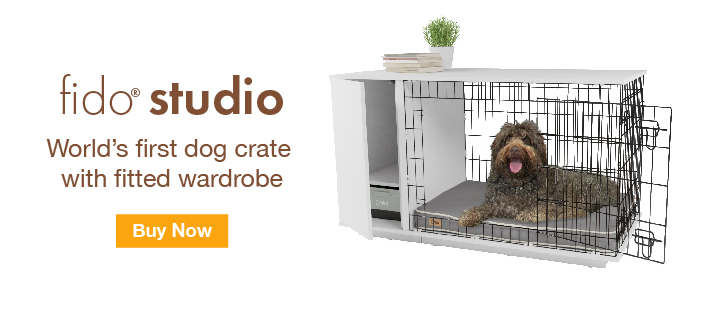Dogs are more than our faithful companions; they’re natural communicators. Whether in sound, movement or posture, dogs can express themselves in various ways. Understanding their modes of communication is what helps us forge deeper connections with them. But how do dogs communicate? Join us as we uncover the subtle and not-so-subtle languages of dogs that speak volumes to those who know how to listen.
Forms of dog communication
Understanding the intricacies of canine communication means diving into a vibrant world where words aren’t necessary. Dogs possess an intricate language that transcends speech and with some keen observation, you can more readily understand what they’re communicating.
Sound
Sounds orchestrate a significant part of a dog’s communication repertoire. From jubilant barks to subtle whimpers, each vocalisation is a unique expression. A bark isn’t just a bark; it’s communication with varying tone, pitch, and duration. Dogs use their bark to convey emotions ranging from excitement to apprehension or even just the desire to go outside for a walk. As pet parents, we learn to identify what each back means so we can better decipher their needs and emotions with greater precision.
Smell
Perhaps the most profound aspect of canine communication lies in their olfactory prowess. For dogs, their world isn’t just seen or heard—it’s smelled. Scent forms the backbone of a dog’s communication, with each sniff revealing a wealth of information. When dogs exchange greetings, they're not merely sniffing each other’s backends, but engaging in a complex exchange of identity, emotion, and social hierarchy. Thankfully they save this communication for other dogs and not humans.
But a dog’s keen sense of smell isn’t just a tool; it's a gateway to understanding the intricacies of their social fabric. Most male dogs will urinate a lot when out on a walk so that they can leave their scent for other dogs to come across. The pheromones in dogs’ urine allow them to mark their territories. It’s dog speak for “Hey, I was here first.”
Body language
When it comes to painting the most vivid picture of a dog’s emotional landscape their body language reigns supreme. In fact, a dog’s body language narrates almost every emotion they have from joy to fear to contentment. A wagging tail may always look like just a sign of happiness, but once you understand its speed, direction, and posture you can reveal the way your dog is really feeling.
When your dog exhibits a relaxed stance or playful bow they’re signifying an open invitation. This might mean they’re ready to play, snuggle on the couch, or just happily hang out at your feet while you work. In contrast, a lowered head or tucked tail might indicate unease or submission. And when a dog displays unusual behaviour like hiding, excessive panting without exertion, or avoiding interaction, it could indicate discomfort, fear, or illness. Always pay close attention to how your dog’s body looks when they are acting certain ways so you can begin to know their body language clues every time.
Different dog breed communication
People from different countries speak different languages so it should come as no surprise that different dog breeds communicate differently. From the gregarious, expressive barks of the talkative huskies to the basenjis' more enigmatic yodels and subtle cues, each dog breed showcases its unique flair in conversation.
Border collies are known as the brainiacs of the dog world for their ability to communicate with unparalleled intelligence. This instinctive breed uses a blend of eye contact, body positioning, and an impressive repertoire of barks and whimpers to convey intricate messages. On the other end, the dignified Great Danes prefer a more composed approach to communication, relying on regal postures and gentle nudges to convey their sentiments.
These distinct communication styles aren’t just happenstance; they reflect centuries of breeding for specific purposes, shaping not only their physical attributes but also their means of expression. Understanding and appreciating these diverse dialects adds an extra layer of fascination to the rich tapestry of the dog-human relationship, unlocking a deeper connection with these diverse and expressive companions.
Dog vs. human communication
Dogs are the ultimate conversationalists, wielding an uncanny ability to tailor their communication to different audiences. Their conversations with fellow canines use a combination of their senses and body language to convey thoughts. For example, a low growl or show of teeth from one dog alerts another to back off. Conversely, the persistence of tail-wagging or rolling onto the belly with legs flapping in the air is communicating a desire to have fun together and play.
But, a dog’s communication with humans is more a mastery of empathy and human understanding than how they ‘speak’ with their fellow fidos. Dogs intuitively decipher our behavioural cues and adjust their language to resonate with us. Tail wags shift from exuberant greetings to gentle hellos, conveying trust, excitement, or a need for attention. And when a dog locks eyes with you well, it’s your dog's ultimate way of showing you love and often transcends words.
Omlet and your dog
Understanding how dogs communicate is vital for building a strong bond. At Omlet, we recognise the nuances of dog communication and design our products with a keen understanding of canine behaviour. From our interactive dog toys to our designer dog collars to the ultimate comfy dog beds, we make products that allow dogs to express themselves freely. By creating items that resonate with a dog's communication style, Omlet paves the way for a harmonious relationship between pets and their humans.






Comments
There are no comments just yet